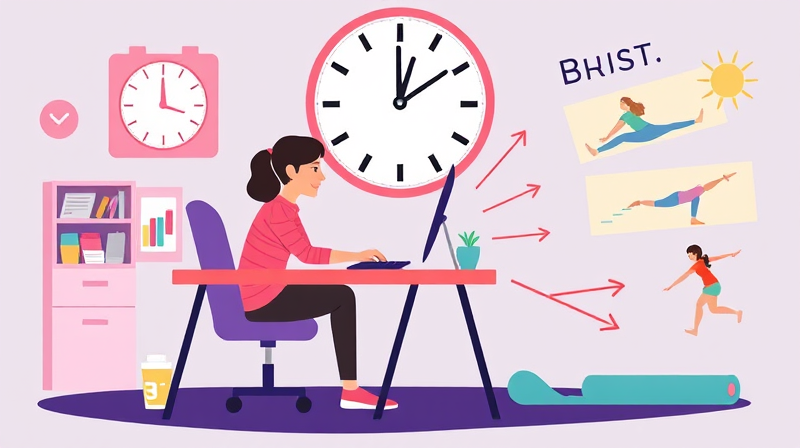Regular exercise is a vital ingredient for a healthy life, and with the right precautions, you can ensure that your journey remains safe and inspiring. By embracing preventive measures, you create the perfect environment for consistent progress without setbacks. The key to a long-lasting and enjoyable fitness routine is listening to your body and adapting your approach.
Every victory in your fitness journey starts with understanding that taking care of yourself is just as important as meeting your performance goals. This article explores practical strategies that help you avoid common exercise-related ailments while encouraging you to stay active and motivated.
The Importance of Warm-up and Cool-down
Before you dive into an intense session, always take time to perform a thorough warm-up. A few minutes of light aerobic exercise such as jogging in place or jumping rope can make a huge difference. Warming up prepares your muscles and joints, gradually increasing your heart rate and minimizing the risk of injury.
Similarly, a cool-down period is essential at the end of your workouts. This process allows your body to slowly return to a resting state and aids in recovery. By dedicating 5-10 minutes to cool down, you ease muscle tension and help eliminate lactic acid buildup, reducing the likelihood of stiffness and discomfort.
Embrace Gradual Progress and Variety
Jumping headfirst into a strenuous workout can be tempting, but it is important to remember that progress should be gradual. Start with manageable intensity levels and slowly increase the duration and frequency of your exercise routines. Overexertion without proper progression can lead to overuse injuries that hamper your long-term fitness goals.
An effective way to keep your exercise regimen interesting and safe is to incorporate cross-training. Varying your workouts not only works different muscle groups but also prevents repetitive strain injuries. Consider alternating between activities like running, swimming, weight lifting, and cycling. This pattern not only brings variety to your training but also helps you build a well-rounded fitness base.
Perfect Your Form and Gear Up Right
Mastering proper form and technique in any exercise is a cornerstone of injury prevention. Whether you’re lifting weights or engaging in dynamic movements, ensuring accurate execution of each exercise can reduce the risk of strains and sprains. A fitness instructor or a certified personal trainer can offer invaluable insights and corrections to perfect your technique. Embracing this guidance means you can challenge yourself with confidence while staying safe.
Equally important is having the right equipment. Investing in quality gear tailored to your specific sports or activities can save you from unwanted injuries. Below are some essential tips for choosing equipment that truly makes a difference:
- Supportive Athletic Shoes: Ensure your shoes are well-fitting and provide adequate support for your feet.
- Protective Gear: Utilize helmets, pads, and mouth guards when necessary to safeguard against impact injuries.
- Equipment Maintenance: Regularly check the condition of your gear and replace any worn-out items to keep moving safely.
Honor Your Body’s Signals
Your body is your most reliable advisor when it comes to health and fitness. If you experience pain or discomfort during workouts, take a moment to pause and assess. Rather than pushing through the pain, acknowledge these signals and rest. Listening to your body can prevent minor issues from turning into major injuries.
This mindfulness also extends to regular hydration and proper nutrition. Water keeps your muscles supple and your mind alert, while a balanced diet fuels your exercises and accelerates recovery. It is imperative to maintain both hydration and nutrition as foundational elements of your fitness regime.
Integrate Rest, Recovery, and Expert Guidance
After a vigorous session, allow your body ample time to recover. Rest is just as crucial as the exercise itself, a fact often overlooked in our quest for progress. Adequate sleep and recovery sessions ensure that your muscles rebuild stronger and your energy replenishes fully.
For those embarking on a new fitness journey or resuming after a break, consider scheduling a pre-exercise screening. This proactive check-up is particularly beneficial if you are above a certain age or have underlying health conditions. Consulting with a healthcare provider can provide tailored advice to keep your exercise routine safe and effective.
Every small step you take to protect your body is an investment in your future wellness. Remember, the goal is not only to achieve high performance but also to sustain a lifestyle that honors your physical wellbeing over the long haul.
By integrating these preventive measures into your exercise routine, you not only reduce the risk of injuries but also reinforce a mindset of self-care and perseverance. Let your commitment to safety inspire you to push your limits while ensuring you recover effectively. The choices you make today will guide you towards a future where fitness and health go hand in hand.
In conclusion, the journey to fitness is as much about prevention as it is about performance. Embrace these strategies and allow them to be the foundation of a healthier, happier lifestyle. As you continue to explore different methods and techniques, always prioritize safe exercise practices over quick results. Inspire yourself by knowing that every step you take safeguards both your body and your aspirations.
Live inspired, move confidently, and remember that every drop of sweat is a testament to your commitment to wellness.








